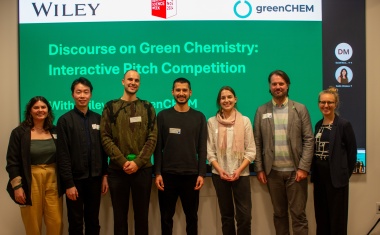The Winning Formula
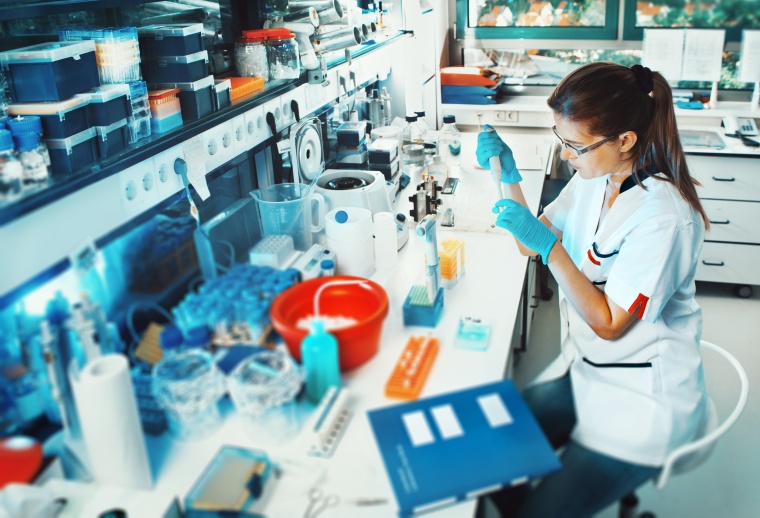

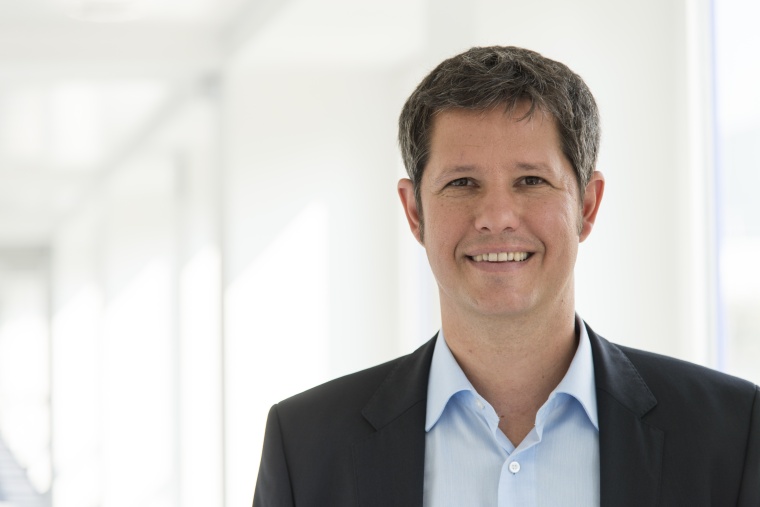






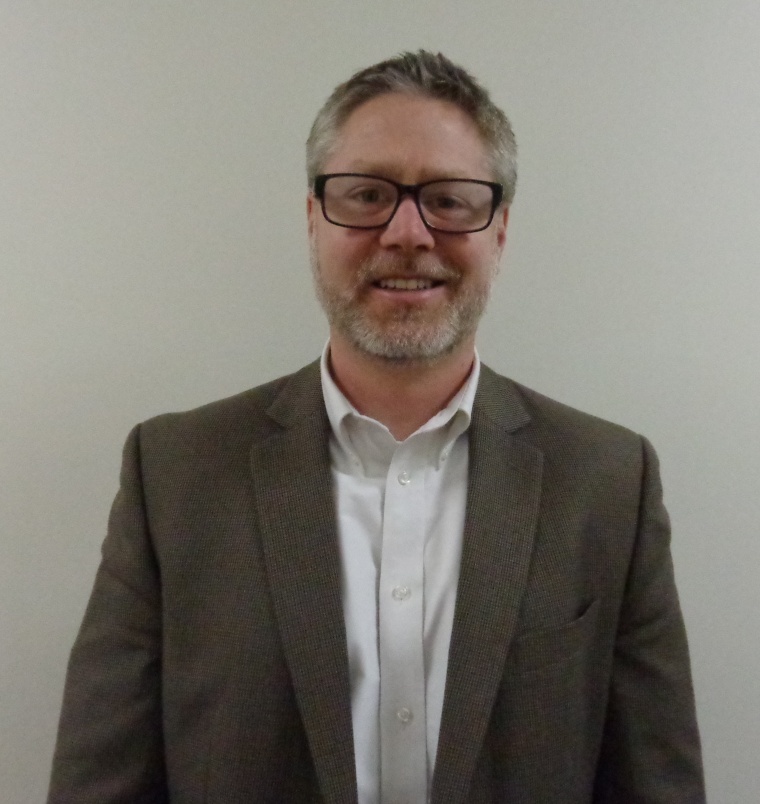

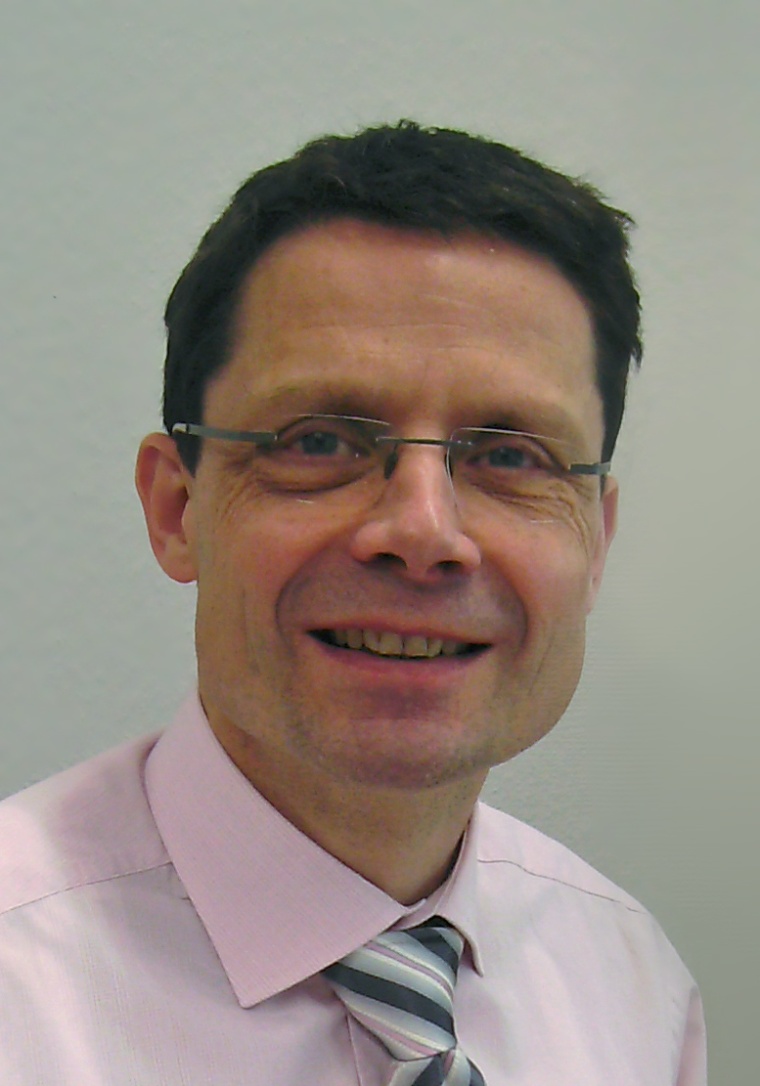





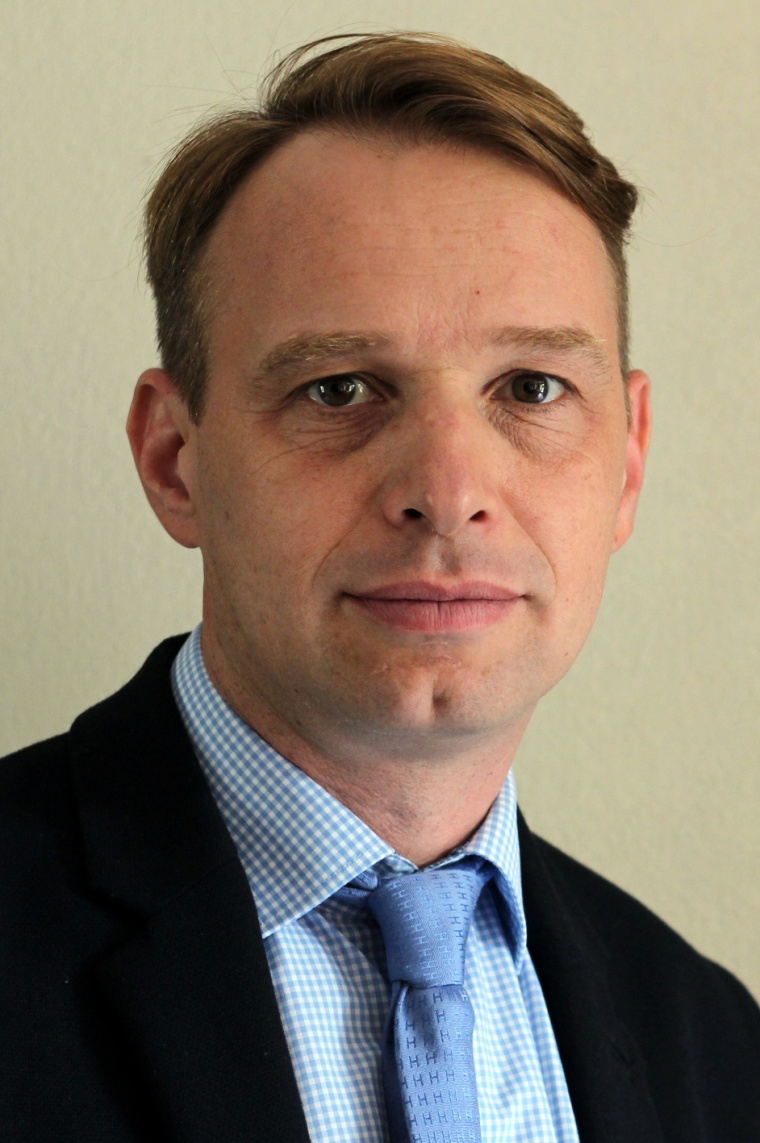


Despite tremendous challenges facing the pharmaceutical industry, it continues with its commitment to innovation and the discovery of novel drugs to address unmet medical needs. Indeed, medicinal chemists face a challenge of their own. Trying to survive in a changing environment where pharma is focusing on biologics drug candidates will require chemists to adapt. CHEManager International asked R&D experts of chemical and pharmaceutical companies to elaborate on their research strategy and share their opinion with our readers. In detail, we interviewed professionals ranging from CEOs to heads of R&D and process development about:
- the crucial success factors in chemical and pharmaceutical research,
- the role of information technology tools in developing reaction routes and processes, and
- challenges and changes affecting the work of R&D chemists in the future.
Read their insightful answers here.
“We place great value on providing enough room for free and creative thinking.”
Dr. Alexander Biedermann (AstraZeneca Germany):
1 What we need is a multifunctional team of experts in medicine, science and economy! It is crucial to harmonize the different skills and expertise. I am convinced that a team can work most efficiently in a cross-functional way — a good collaboration of all team members with their special skills is the key to success.
3 Furthermore we place great value on providing enough room for free and creative thinking. Researchers have to deal with different challenges, which require the ability to look at problems from different perspectives. In order to provide an efficient working atmosphere there must be room for creative approaches.
“Once you have set up a diverse team of … experts, you need to facilitate an environment of active exchange.”
Dr. Timo Flessner (Bayer):
1 Fostering a broad, deep-diving and continuously growing chemical expertise in diverse and motivated teams is critically important both in medicinal chemistry and process chemistry. Here, you need the right mixture of open-minded senior experts, so-called thoroughbred chemists, with many years of industry experience under their belts, as well as young chemists, freshly educated and highly motivated, who bring in state-of-the-art scientific knowledge and modern ways of working. Offering appropriate career opportunities for chemists within chemical functions also is a crucial factor for success. Once you have set up a diverse team of highly skilled experts, you need to facilitate an environment of active exchange: internally, between the team members, as well as in close collaboration with external stakeholders — be it academic or industrial. And within the teams, you need to be able to professionally challenge each other to come up with the best solution — as a team.
3 Increased complexity is a significant challenge that R&D chemists face today. This is especially true for pharmaceutical R&D and applies to all areas, be it in the identification of innovative drug candidates, dealing with longer-sequenced, more complex synthesis routes or specific regulatory requirements. The diversity of new technologies, e.g., combinations of small molecules — pure chemistry — and biologics such as in antibody-drug-conjugates, adds to the increased complexity. Here, dedicated high-end expertise and resources are required and need to be established, often with the help of external sources. Coping with the further enhanced necessity to collaborate, both internally as well as across the scientific landscape, is another challenge for R&D chemists today. In my eyes, however, this is also an opportunity: Close collaboration and interaction will ensure the future need and success of scientific excellence in chemistry.
“Chemists have always been communicative people, and building on this strength we shall continue to fulfill our task.”
Klaus Urbahns (Merck):
3 I believe that communicating effectively in an increasingly complex environment will remain a key challenge for chemists in industrial R&D. Let me give you some examples from our work at Merck, illustrating this point.
Example 1: Recently, we generated a clinical candidate destined to modulate the immune system in order to fight cancer. The synthesis was performed in a 17-step linear sequence on a kilogram scale. Managing such an endeavor under time pressure was not only a matter of all hands on deck. The complex logistics required teamwork across three continents, involving sites in the US, China, Italy and our headquarter site in Darmstadt, Germany. Suffice it to say that effective communication was indispensable for delivery of the material in time.
Example 2: In recent years, the industry has established an increasing number of pre-competitive consortia — e.g., the IMI lead factory. They exemplify novel ways of working jointly across companies in difficult areas. Members of such consortia will be at an advantage as they benefit from information shared among participants. Again, effective communication, in this case even beyond corporate boundaries, is an important prerequisite for success.
Example 3: The advent of therapeutic proteins as an injectable treatment modality has been seen by many chemists as a competitive challenge for small molecules. The unparalleled specificity of antibodies has inspired Merck to bring chemists in close proximity to protein engineers by organizing them under the same roof, which we call Discovery Technologies. The new structure enables scientists to learn from each other and share best practice through communication across departments.
Chemistry is often called “the central science,” because of its ability to connect different scientific disciplines. Chemists have always been communicative people, and building on this strength we shall continue to fulfill our task in the future.
“The crucial factor … will be people — well-educated and with the right empathy and motivation for research.”
Prof. Jochen Maas (Sanofi-Aventis Deutschland):
1 The crucial factor in chemical research will be people — well-educated and with the right empathy and motivation for research. Those people have to be brought together independently of their organizations — academia, industry or biotech. And this requires new and innovative ideas of collaboration, which have already started to be implemented.
2 The role of software tools to predict and develop reaction routes and processes for given target molecules depends on the research area: A lot of processes already can be predicted quite accurately by in silico approaches — e.g., absorption. Other areas like metabolism will require much more effort to achieve a similar level.
3 R&D chemists will have to be extremely flexible in the future: At least industry preferences for specific modalities — like small molecules, peptides, proteins, oligonucleotides — will probably change much more rapidly than in the past.
“We envision … new collaborations to intervene and prevent diseases before symptoms even appear.”
Stef L.E. Heylen (Janssen):
1 Collaboration plays a central role in our business today. The one sentence we use most often to describe ourselves is: We collaborate with the world for the health of everyone in it. We’ve forged hundreds of partnerships with academic institutions, advocacy organizations and companies of all sizes.
Through our four Johnson & Johnson innovation centers, we’ve created new and open innovation models. To find the best science and technology around the world, we’re collaborating with entrepreneurs and scientists through 700 deals as part of our efforts to solve the greatest health-care needs of our time.
We are also collaborating in the largest public-private partnership in life sciences worldwide, the EU’s Innovative Medicines Initiative. In addition, our company was a founding member of TransCelerate BioPharma, a nonprofit organization with a mission to collaborate across the biopharmaceutical industry to identify and implement solutions to drive the efficient, effective and high-quality delivery of new medicines.
Recently we greatly increased our efforts to actively engage patients and seek their input at every stage, from development through commercialization. And, as appropriate, we’re working much more closely with regulatory authorities to get new medicines to patients in need. For example, by collaborating with regulatory authorities we were able to greatly accelerate our development of Imbruvica because we and regulatory authorities recognized how urgent the need was for patients.
We are also able to accelerate our development of new medicines through close collaboration of Janssen colleagues and external business partners around the world, enabling us to develop new medicines 24 hours a day.
3 We expect collaboration will play an even more important role for Janssen in the future. For example, with advances in science and technology, we envision a future where we will be able to forge new collaborations to intervene and prevent diseases before symptoms even appear.
“Dissemination of data-rich tools across academia and industry will be the ultimate education of future R&D chemists.”
Dr. Michael Quirmbach (CordenPharma):
3 Both the chemical and pharmaceutical industries are rapidly changing in that they both have a need to adapt in order to stay ahead of requirements and competition. I believe it is widely accepted that the traditional way of running and optimizing reactions as a chemist — e.g., simple round-bottom flasks with subsequent TLC, later HPLC, analysis — is not the future for any R&D chemist in a chemical or pharmaceutical research lab. Instead we now discuss the “lab of the future” — but what exactly does it mean? Besides the use of sophisticated automation including online monitoring of reactions using probes, which will all become standard for any R&D lab, it means managing big data.
Integration of all of the available data remains the biggest challenge across the industry and academia. The lab of the future is generally seen as the way to secure sustainability by learning to navigate a large volume of data. The dissemination of data-rich tools across academia and industry will be the ultimate education of future R&D chemists. New skills will be necessary to manage this data-rich environment, which will in turn require intelligent collaboration across departments starting at the university level. The benefits are obvious, i.e., the acceleration of drug development in the scale-up phase for a supply of clinical phase material. Carefully controlled reactions using analytical probes will provide detailed process understanding — important information for faster and more efficient scale-up. Additional topics such as C-H functionalization, that have been historically considered the holy grail of chemistry via functional group conversion, might be solved in the future by a more sophisticated approach. Key elements are the use of experimental design, the parameterization of organic chemistry and the development of sophisticated models that can relate back to a certain reaction mechanism, which may then be used for prediction of effects such as site selectivity.
“The war of talent is on.”
Lukas von Hippel (Pharma Waldhof):
1 Some success factors did not change, and may remain: Quality, up-scaling, and safe and stable processes. However, this is only one part of the equation: In a globalized world, intercultural competencies become more relevant. For R&D, project management, a stable supply chain, efficient communication — internal and external, and management of all regulatory aspects are musts. In addition, the borders between chemistry, biotech and biology weaken, not only at high-end molecules but also in the production of feedstock. Interdisciplinary understanding will become more relevant as it was some decades ago.
2 When design of experiments was introduced, it worked in some cases, in most cases it did not. Today, computerized support of R&D is standard. However, the prediction of reactions remains difficult as long as we are not able to model reactions in total. At the end, every software works by algorithm, and the output can be only as good as the algorithms are. Algorithms are getting better, as AlphaGo showed, amazingly winning Go games. The day software will be able to successfully offer recipes for lab experiments may change our understanding of intellectual property (IP) and proof of evidence.
3 The war of talent is on: First, Europe has to be attractive for skilled people. Intercultural challenges will come and have to be solved. Second, we will see that work will partly continue to move away from Europe, so the challenge of managing international cooperation, already in R&D status, will increase. Third, interdisciplinary cooperation will become more relevant. The ability to understand others and communicate between disciplines may become even more relevant than it is today.
“In the end those will be successful who can combine the right tools with the intuition and experience of a chemist.”
Dr. Jürgen Sans (AlzChem):
1 Efficiency and effectiveness are the key factors for success in chemical research. Success-oriented chemical research is directly linked with chemical production. Lab chemists have to understand not only what is technically possible but also economically feasible. It saves time and money if the design of experiments is focused on those reactions and conditions that could be scaled up easily, safely and — if possible — without an investment. It also has to be noticed that a production process not only depends on the reaction route but also on essential factors like workup conditions, purification, safety, supply chain, waste management, etc. A lab chemist has to consider these points early in development. Therefore, a strong technical background and an understanding of the cost of production are required. In some cases it will be more important to be very fast with acceptable costs, in other cases it might be more important to optimize the costs within an acceptable time range. Especially for contract manufacturing projects this needs to be clarified with the customer at the beginning of a project.
For efficiency it is important to have a broad range of technologies available in the lab as well as in the pilot and in the production facilities. The decision for a reaction route has to be based on a series of factors and not only on chemistry. For technologies that are not available in-house, collaborations need to be established as early as possible. It is essential for smooth scale-up that research chemists, engineers and plant managers cooperate closely. For contract manufacturing it is important to offer some unique technologies or to have the ability for the handling of crucial raw materials or to have some special raw materials in-house.
3 For the future, chemical research will increasingly be impacted by IT tools, both in design and evaluation of experiments. If applied properly, this will certainly enhance the efficiency of lab work. I can think about automated lab reactors, software tools or fast analytical methods. Due to the acceleration of product life cycles, mini-plant and continuous reaction technology have to play a bigger role in scale-up of new processes. However, in the end those will be successful who can combine the right tools with the intuition and experience of a chemist.
“Fostering a culture that encourages the sharing of information … is a fundamental requirement.”
Dr. Ralph O. Schoenleber (Bachem):
1 For a contract manufacturing organization in the competitive environment of the pharma and biotech industry, research and development is extremely important to further enhance customer satisfaction and service quality. Constantly increasing demands on performance combined with growing sustainability requirements, such as those relating to occupational safety as well as waste management, are chief concerns of our markets. There is a continuous trend toward the development of molecules with higher complexity, and at the same time, the patent landscape is more and more crowded. Furthermore, requirements from customers and authorities with regard to documentation in general and data integrity in particular are changing the way people work.
3 In order to meet the increasing demands of the markets, a company needs the right combination of creative, innovative, but at the same time structured and accurately working scientists on board, and to put a focus on the management of knowledge as a key factor to success. Efforts on knowledge management at Bachem focus on organizational objectives, such as continuous improvement, competitive advantage, innovation, and the sharing of lessons learned. Knowledge management includes expert systems, post-action reviews, cross-project learning, knowledge sharing, best-practice transfer, and collaborative software technologies — e.g., chemistry and technology forums including blogs. Fostering a culture that encourages the sharing of information, based on the concept that knowledge is not irrevocable and should be shared and updated to remain relevant, is a fundamental requirement for successful and future-oriented research and development.
“The most crucial success factor … is that we do not only talk about innovation but live innovation.”
Dr. Karl Kolter (BASF):
1 The most crucial success factor — and this holds true not only for pharma but also for other industries — is that we do not only talk about innovation but live innovation. This means that all units of a company strive for innovation, not just the R&D department, and all consider it as an indispensable factor for the future of the company. It also means that the required resources are provided and people are empowered to make decisions. I am pretty sure that we will see in the future much more interaction — interaction within a company as well as between independent companies whether they are customers, competitors, service providers, contract research organizations (CROs) etc. It is great to have our own specialists, but it is impossible to have them in all fields. A high degree of networking between the various specialists will not only solve current problems, but it also offers more opportunities in open innovation. This does not mean that open innovation is restricted to specialists only.
3 On the other hand complexity is also becoming an issue since R&D tasks are getting more and more complex, and in case a company has its own complex structures it generates so many interfaces and obstacles that projects where a lot of units are involved are delayed. Thus companies having explicit organizations and clearly assigned responsibilities are quicker in their internal work and therefore have more resources and capabilities for all kinds of interaction with other parties.
Currently, everybody talks about autonomous driving and derived from this the question pops up: Are autonomous developments achievable? Probably not in the near future, but at least digitalization will strongly support R&D work.
“Confidence to try something reasonable in the lab, even if it … does not work, may provide clues on how to succeed.”
Kurt J. Kiewel (Cambrex):
1 The important skills for individuals within a successful research program are possession of a broad knowledge of chemistry, creativity in problem solving and a willingness to get peer advice. These factors, along with experience in hands-on research, allow chemists to develop and progress.
Not every problem has a straightforward solution, and not every reaction is described in the literature. Having the confidence to try something reasonable in the lab, even if it ultimately does not work, may provide clues on how to succeed. Chemists are not always trying to solve new problems, just similar problems in a different context; so being current on the literature and sharing thoughts with colleagues will help to learn about other people’s experiences.
2 Predictive software can provide a complementary tool to literature review and collaborative brainstorming for identifying possible reaction routes. Selecting a route for manufacturing via software may not analyze a number of key points critical to successful and economical process development:
Firstly, software tends to focus on bond making/breaking, and may not capture the costs or difficulties associated with workup, purification, isolation or waste. Additionally, one has to assess the scalability of software proposed routes in the context of the project, and also the available manufacturing facility in which the chemistry will be undertaken, which is often a significant driver for route selection. It is also important that safety evaluation is undertaken when predicting and developing a route, so the use of any modeling software within a wider cross-functional team, where ideas and literature research can be discussed and brainstormed in an open environment, is ideal to successfully transition and optimize a project from development through to manufacturing.
3 Batch and semi-batch processing is still used in chemical manufacturing, which makes classical process development skills, tools and knowledge as important as ever to master. Emerging technologies are being more widely implemented, but it is important to know when and how these new strategies should be integrated into a manufacturing plan to ensure they are utilized efficiently.
Beyond process development for manufacturing, the requirements of laboratory investigations to support regulatory filings are becoming increasingly rigorous. At the same time, newer quality, impurity, safety and environmental policies result in a more restrictive space in which to operate.
A greater number of cross-discipline science degree programs are available in academia, which may be taking time away from developing broader chemistry fundamentals, and there are limited opportunities for chemical process development training ahead of entering the job market. The number of mergers, acquisitions and the closing of research departments promote a perception of uncertainty in the job market, which may be turning potential scientists toward other career pursuits. In the long term, a negative impact on the available trained workforce for the chemical industry may result.
“It will be … important to better integrate and adopt regulatory and environmental requirements into R&D.”
Ingrid Hegbom Ekman (Cambrex):
1 It will become increasingly important to better integrate and adopt regulatory and environmental requirements into R&D organizations, and more specifically, get the development chemists to consider these factors at an early stage.
Automation will also become ever more valuable to improve process understanding and “seeing the process window,” as will the adoption of “enhanced development in combination with the traditional way of developing processes,” as outlined in ICH Q11. This also includes the use of risk assessments/quantitative risk assessments from an early development stage.
High-tech analytical instrumentation and integrated, computerized systems to support data evaluations, as well as storage and tracking of data, will be extremely valuable going forward. Internal and external collaboration in specialist areas is also very important, but takes time to establish and a key is open collaboration with external partners, who may have specialist knowledge and expertise beyond that which is available internally.
3 Chemists need to be more aware of all regulations and requirements for a process to be both efficient and sustainable into the future. It is important not to view regulations as being painful but as a natural variable that must be taken into consideration, as very often they are nothing more than common sense.
“A solid background of standard process chemistry … is nowadays not enough.”
Claudio Pozzoli (Cerbios):
3 Challenges derive from increasing use of flow chemistry as an alternative production method with respect to the standard one based on batch. This technique, now well-studied and adopted also at the industrial level usually coupled with design of experiment and an online monitoring system, is too far away to be fully understood.
Chemical complexity of new molecules is increasing; quite often they are not solid, and their purification cannot be done anymore by crystallizations — once considered an art — but by using different types of chromatographic purifications.
Another fascinating challenge derives from the possibility to increase the bioavailability of compounds that are otherwise poorly water soluble, modifying their particle size by using engineering systems of particle-size reduction alternative to the standard one. An interesting way to obtain this effect is by using supercritical fluid, such as carbon dioxide.
The manufacturing of highly potent active pharmaceutical ingredients — HPAPIs — whose market is the fastest growing segment in the pharmaceutical industry, and more specifically of antibody drug conjugates — ADCs — surely an emerging class of compounds attracting a lot of interest and investments from chemical companies, represent great challenges for R&D chemists. The handling of molecules having an occupational exposure limit at or below 10 micrograms per cubic meter of air, their conjugation with monoclonal antibodies — mAb, the necessity to perform these reactions and purifications under glove boxes are all challenges and changes for R&D chemists.
Finally, HPAPIs, ADCs, industrial chromatographic purifications and particle-size engineering are just some of the challenges Cerbios is facing with its R&D department and chemists. This trend is surely true now and I am sure will be much truer in the future. For R&D chemists these challenges mean that a solid background of standard process chemistry, knowledge of good manufacturing practice, HSE, program management, etc., acquired over years of experience and absolutely necessary are nowadays not enough.
“Speed and innovation will be gained from embracing collaboration across different areas of the business.”
Dr. Bernhard J. Paul (Johnson Matthey):
1 Having access to a broad range of specialist technologies is becoming increasingly important as researchers develop larger and more complex molecules. For example, being able to use different technologies, such as chemocatalysis and biocatalysis, is particularly valuable for solving complex chemistry problems. Another crucial factor is collaboration. Our customers face complicated problems and we often find a better solution can be provided through collaboration between our different departments. Collaboration is a core principle throughout Johnson Matthey. For example, we have a technology center in Sonning Common in Reading, UK, with capabilities in materials characterization, and this provides an additional resource for our Fine Chemicals Division when dealing with unusual solid form characterization problems.
2 Having more long-term information management for emerging technologies will certainly change the way that we think and work. We use tools today such as statistical design of experiments — DOE — to optimize reactions, and certain technologies, such as continuous processing, that rely heavily on software control for maximal effectiveness. In biocatalysis, our enzyme evolution and optimization capabilities would not be possible without computational tools to design and predict new enzymes. Software tools are vital for much of what we do today and they will play an even bigger role in the future.
3 The biggest challenge affecting the work of R&D chemists relates to the industry’s ongoing need to develop more molecules, more quickly, resulting in shorter timelines and greater pressure for R&D teams. The traditional blockbuster drug model no longer works for many molecules, so pharmaceutical companies are looking for different ways to deliver benefits to patients while also delivering profits. R&D scientists will have to be very flexible as well as nimble. Furthermore, today’s complex problems do not often fit into a single department, so great advantages for speed and innovation will be gained from embracing collaboration across different areas of the business.
“The future is the coveted ability to harness databases that extend the individual knowledge base to the collective.”
Jason Apter (Merck):
3 It is not news that chemists are facing significant challenges in their labs today. The current economic pressure on research has made downsizing and materials conservation a new constant. But there is reason to be hopeful. Chemists have been publishing breakthrough methods at an unprecedented rate, enabling innovative methods to be shared widely in order to conserve time and to leverage the expertise of the scientific community. Openly sharing revolutionary approaches has already led to the widespread adoption of high-throughput experimentation — HTE. This rapid, parallel method can be miniaturized and scaled for quick identification of the most promising methods while sparing precious substrates and allowing valuable research time to be devoted to strategic goals. But this is an incremental step forward. The future is the coveted ability to harness databases that extend the individual knowledge base to the collective. On the horizon, the promise of smart chemical tools is coming into focus. Proven successful, they will change the way we do chemistry. They will enable many chemists to uncover new approaches to solve their most difficult problems.
At Merck’s life science business, with our celebrated Aldrich tradition of “chemists helping chemists,” we are proud to enable chemists to generate faster, more reproducible results. We are proud to support chemists on their unique discovery journey. We strongly believe the best days of chemistry are yet to come.
“Speed and flexibility are of utmost importance when considering the supply of drug substance to clinical development.”
Andreas Stolle, Peter Poechlauer (Patheon):
1 For a process development chemist in the pharmaceutical industry, speed and flexibility are of utmost importance when considering the supply of drug substance to clinical development. This not only requires experienced chemists but also the ability to combine chemistry and chemical engineering for manufacturing and scale-up.
Modern laboratory tools are designed to support this challenge with parallel experimentation and fast — preferably online — analytical methods. Seamless collaborations — internally and externally — with plant engineering, quality organizations and health-safety-environment departments are also essential.
2 Databases for literature, chemical reactions, retro syntheses and properties of chemicals are well-established in the industry. However, for the design of synthetic routes, we strongly believe that a brainstorming exercise of chemists and process engineers remains critical to quickly consider scalability and specific plant features and supply chains.
The usage of design of experiment — DOE — software is vital to simplify and accelerate modern process development, and create more knowledge about critical process parameters.
3 With approximately 40% of newly developed APIs being classified as complex molecules, manufacturing is no longer a straightforward task. While timelines are expected to be even shorter, APIs now have a larger number of stereo centers, more labile functional groups, longer synthetic pathways and also require unusual reaction conditions.
As a result, conventional pharmaceutical manufacturing equipment may not always cope with this growing synthetic complexity. The task of the chemist goes beyond traditional chemistry and a synthetic route, and an innovative plant concept needs to be co-developed. Only this approach will allow a service provider to deliver high-quality material and a sustainable production concept, which allows for prolonged patent protection by the client.
“Speed, technology and knowledge of complex chemistry are becoming more important as competitive differentiators.”
Dr. Jörg Mohr (Saltigo):
2 It is essential to already identify cost drivers in the bidding process and to envision optimized processes without having developed them in the lab yet. Our process development concept is based on three main pillars. We use design of experiments — DOE — to optimize reaction conditions. Second, our automated mini-plant equipment resembles the plant-scale equipment as closely as possible to shorten development time. Third, we operate a well-equipped process technology lab to closely monitor reaction kinetics and to investigate process safety conditions.
Quality by Design — QbD — and process analytical technology — PAT — play an important role in our compliance system. At-line and online analytics, in particular, are becoming more and more popular, and classical in-process controls are being replaced by PAT. We believe the combination of online/at-line analytics with release procedures is a future trend. QbD, a well-established methodology in the pharmaceuticals industry, is gaining importance in other industries as well.
In addition to established programs, we are carefully observing which new software developments are available to the industry. For example, we tested ChemPlanner and found it to be helpful when the objective is to generate new synthesis ideas. However, that is only a sideline of our activity because Saltigo, whose essential activity is process development, generally has to use manufacturing processes — technical packages — specified by its customers.
3 We see that the types of compounds being developed are becoming more complex and the total number getting to market is diminishing; therefore speed, technology and knowledge of complex chemistry are becoming more important as competitive differentiators.
Our team’s know-how makes a major contribution to minimizing scale-up risk, for example. An inherent problem in scaling up a project from the laboratory scale to production is physical in nature. While a mixing process on the laboratory scale frequently takes only a few seconds, the length of time it takes in the reactor is significantly longer and cannot simply be extrapolated to the larger production quantity. The same goes for the effects on process safety. Therefore, we are using a modeling tool for optimizing and predicting the performance of batch process unit operations and a process modeling software for distillation modeling — not least to ensure safe operation.
“It’s always highly skilled and committed individuals who at the end make the difference.”
Dr. René Imwinkelried (Siegfried):
1 Many different factors make an R&D organization successful. Within the contract development and manufacturing organization (CDMO) arena, I think of an organization having broad experience in developing and scaling up chemical and formulation processes, applying state-of-the-art analytical tools to better understand reactions, and also being capable to collect and interpret relevant scientific data to predict the outcome of reactions at scale is important. In addition, a culture of strong collaboration and open communication, both internally and externally with clients and suppliers is essential. Beyond these factors, many more still influence successes.
For me personally, the foundational success factor for an R&D organization is and will remain individuals who have a deep understanding of science, who rigorously apply scientific and engineering principles, and individuals who display a high drive to move things forward.
Yes, of course, we need several of the latest tools and instruments, yes we need strong collaboration and teamwork, and we need efficient business processes. However, I do not know of any successful pharmaceutical product that was invented, developed and commercialized by a business process or a specific top notch tool: It’s always highly skilled and committed individuals who at the end make the difference. Individuals who make the difference are those who see the outlier in scientific data that is hidden to others; individuals who challenge assumptions and conclusions based on opinions rather than data; individuals who do not always swim with the flow; individuals who take ownership for a project and push things forward despite the many obstacles along the way; and those individuals who believe in a successful outcome. In my opinion, individuals others want to be around.
“A collaboration ultimately helps us to make the best use of the core competencies of each of our partners.”
Dr. Ralf Karch (Umicore):
1 The most important skills in a successful research group are to know precisely your core competencies — what we do and where we do best — as well as to know what we cannot do and where we can get access to these missing competencies. At Umicore we know our expertise lies in metal coordination chemistry, in excellence in handling highly sensitive or toxic materials, and in chemical process development and scale-up under regulated environments — GMP, ISO, etc. And we know we can rely on a number of close partners bringing related applications and technology expertise.
This leads us to the necessary mindset for success: collaborate. Because a collaboration ultimately helps us to make the best use of the core competencies of each of our partners. Cooperating with customers keeps us focused on understanding them, their strategies and their needs — aiming to deliver faster, better and more cost-efficiently. Collaborations with our technology and development partners bring us out-of-the-box thinking, missing competencies for further organometallic materials development and insights to develop on time the next generation of catalysts, high potency APIs, or even electronic materials.
Strategically aligning these collaborations and leveraging on the tremendous amount of information and knowledge generated, without divulgating any proprietary information, requires efficient tools. Open access to a structured market, technology or customer information is key, combined with quick access to new technical information, as well as shared platforms allowing efficient exchange between the scientists and the specialists of our fields. Because a challenging pharma project may benefit from the successful development of an electronic material!
3 The biggest challenge of a chemist today is speed: meaning how to develop a product faster albeit at constant level of quality, with the same level of process safety for a smooth and fast transfer to commercial production — all this while surrounded by an unrivalled flow of new or even contradictory information.
Does it mean that the research chemist will need to evolve to be more of an analyst, to become an expert in accurately and quickly defining a problem and developing its solution out of the amount of information available? Probably — as well as the “too slow” chemical development may have to be restricted to fundamental research, or to a few strategic development projects.
“The challenges … will require a broad skill set and the ability to collaborate within the company and around the globe.”
Linda Hicks (Vertellus):
1 In today’s business climate, it is even more critical to make the business case when it comes to investing in research. Companies must be able to quantify a return on investment for any new research initiative. Accordingly, chemical companies are seeking research chemists who understand chemistry and the practical reality that it takes to create value in the industry. Research budgets simply don’t allow companies to retain specialized experts in every specific discipline needed to execute new product development such as reaction kinetics, thermal dynamics and polymerization. Today’s chemical companies are looking for individuals with broader, more flexible skill sets that can be applied to different areas of the business and technology platforms as the marketplace evolves. Scientists and engineers are also needed with the skills to establish and maintain collaborative partnerships and consulting relationships to access higher level expertise in needed disciplines.
Interestingly enough, this trend aligns with a demographic shift discussed at a recent US Industrial Research Institute forum for chief technology officers. The millennial generation has a nimble and impatient mindset when it comes to their career paths; companies that can provide opportunities for employees to experience different parts of the business may be more effective at engaging and even retaining young employees.
3 The nature of our industry today is already creating a shift in how companies approach R&D. Compared with decades earlier, the focus of R&D has moved from pure research discovery toward optimization and application. This shift also applies to the regions of the world where different types of work are conducted. Companies are tending to focus their innovation efforts in the West and outsourcing more routine work offshore. Again, economies are influencing this shift. The challenges our industry faces — both economic and demographic — will require a broad skill set and the ability to collaborate within the company and around the globe.
“It is very important to mix young bright researchers … and experienced people … to find innovative solutions.”
Olivier Simon (WeylChem Lamotte):
1-3 The main goal of chemical and process research is to create new pathways: more competitive, cleaner, safer for the users and producers, and respecting the environment. To achieve this goal, the researchers today are strongly supported by extensive access to information, simulation tools and automatized parallel reactors.
Our research focuses on the molecule synthesis or mixture preparation. For this purpose, our R&D teams are trained to develop the best chemical routes and processes. One crucial success factor is the building of a heterogeneous team combining a state-of-the-art knowledge of industrial organic chemistry and a unique know-how gained over the years. Therefore it is very important to mix young bright researchers, trained to the latest technologies, and experienced people, familiar with the existing assets, in order to emulate creativity and to find innovative solutions.
Designing new pathways also means that one is able to test operating parameters out of the standard range: for example, by setting high kinetic rate of reaction using short residence time in continuous reactors like micro reactor systems or microwave heated tubular reactors. Purification of the product or intermediates is not to be overlooked. Nowadays, distillation can be well-simulated when the thermodynamics of the compounds are known. The major problem is that for advanced molecules the thermodynamic is not available or the molecules are too heavy to be distilled. In that case other technologies should be employed. WeylChem develops a number of new ways to provide answers to this challenge. By using continuous liquid-liquid extraction, prototyped in the lab and in mini-plant, or supercritical CO2 extractions, where we are able to tune the solvent properties by playing with the temperature and pressure, we support our customers with innovative options.
For us the future of R&D is a strong integration of organic chemistry and chemical engineering adapting reactors and purification units for the chemistry and not the chemistry to the vessels.
most read

Making Waves
Global water scarcity is now urgent due to climate change, population growth, and unsustainable practices. 700 million people could be displaced by 2030, warns UNICEF, especially in water-intensive industries like personal care, textiles, food production, and paint.

From Data Silos to a Digital Future
Chemical producers in Germany are grappling with rising costs, high energy prices, global competition, and an impending knowledge gap due to demographic shifts. Kuraray, a global leader in specialty chemicals, is addressing these challenges with a comprehensive digitalization strategy.

Substances of Concern
The EU Chemicals Strategy for Sustainability (CSS) highlights the shift to a hazard-centric approach in EU chemical regulation, emphasizing 'Substance of Concern' over risk-based measures.

Fostering Innovation and Collaboration
Valerie Diele-Braun, CEO of IMCD, shares her vision for sustainability, global expansions, and strategic direction in an exclusive CHEManager International interview.

Innovation at the Intersection of AI
John Banovetz, Chief Technology Officer at 3M, on the role of digital transformation in realizing the company's goals.



